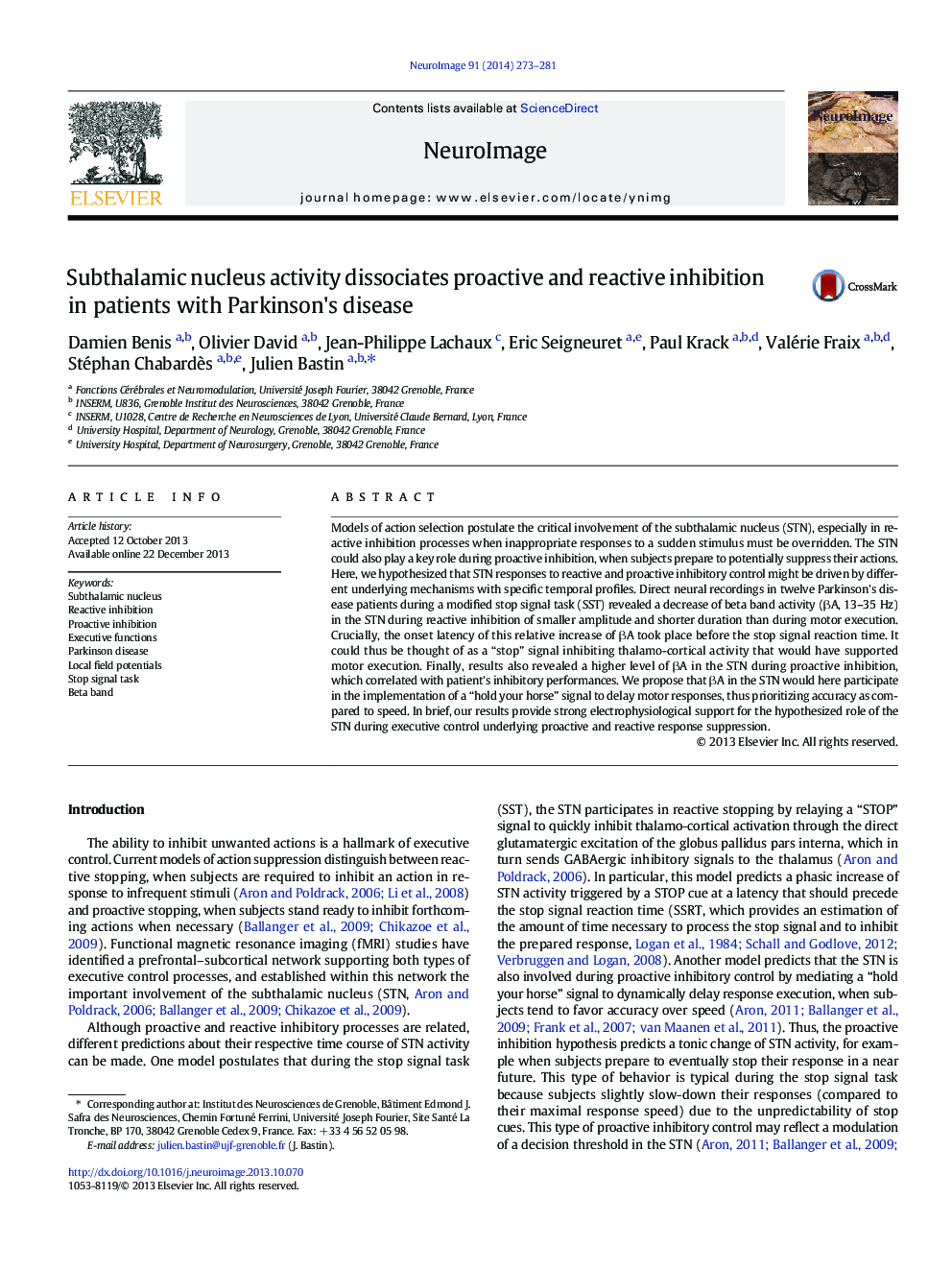| کد مقاله | کد نشریه | سال انتشار | مقاله انگلیسی | نسخه تمام متن |
|---|---|---|---|---|
| 6027642 | 1580914 | 2014 | 9 صفحه PDF | دانلود رایگان |

- STN activity dissociates reactive and proactive inhibition in the β band (15:35 Hz).
- Successful stopping is correlated with fast increase of β activity.
- Proactive control is correlated with temporally sustained increase of β activity.
- STN activity during proactive control predicted subjects' inhibitory performances.
Models of action selection postulate the critical involvement of the subthalamic nucleus (STN), especially in reactive inhibition processes when inappropriate responses to a sudden stimulus must be overridden. The STN could also play a key role during proactive inhibition, when subjects prepare to potentially suppress their actions. Here, we hypothesized that STN responses to reactive and proactive inhibitory control might be driven by different underlying mechanisms with specific temporal profiles. Direct neural recordings in twelve Parkinson's disease patients during a modified stop signal task (SST) revealed a decrease of beta band activity (βA, 13-35 Hz) in the STN during reactive inhibition of smaller amplitude and shorter duration than during motor execution. Crucially, the onset latency of this relative increase of βA took place before the stop signal reaction time. It could thus be thought of as a “stop” signal inhibiting thalamo-cortical activity that would have supported motor execution. Finally, results also revealed a higher level of βA in the STN during proactive inhibition, which correlated with patient's inhibitory performances. We propose that βA in the STN would here participate in the implementation of a “hold your horse” signal to delay motor responses, thus prioritizing accuracy as compared to speed. In brief, our results provide strong electrophysiological support for the hypothesized role of the STN during executive control underlying proactive and reactive response suppression.
Journal: NeuroImage - Volume 91, 1 May 2014, Pages 273-281